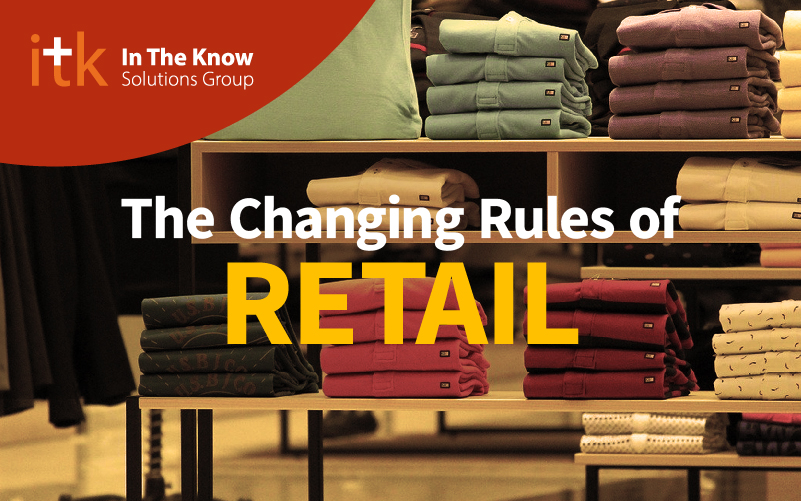The last 40 years have seen a massive change in the wholesale and retail industries. From the “Hay Day” of retailing in the ‘80s to the present day, the industry has undergone significant transformation. In the past three years, particularly, the rate of change has accelerated at a scale that is hard to comprehend. Many have characterized the changes as “cataclysmic” or “apocalyptic,” however this does not accurately describe the situation. The definition of an “apocalypse” is: an event involving destruction or damage on an awesome or catastrophic scale. This mis characterization starts with the words “an event.” What has happened to the retail industry has not been any single event but a slow devolution in the past 10 years away from the original reason for the existence of retailing, Convenience.
The Never-ending Rise of Convenience
Prior to the 1970’s, the predominant place to visit the famed department stores of the day was in major cities. In the ‘70s and ‘80s, populations migrated from the cities to the suburbs. The result was the proliferation of malls and stores, which increased the availability of products to the public, making it more convenient than ever before for consumers to buy. Though there was consolidation of the department conglomerates in the ‘90s, growth was fueled by the new big-box retailers and the emergence of outlet shopping. In both cases, it was the availability and accessibility of products that drove convenience and thus unprecedented growth. This success brought a sense of hubris to retailers who began to act like this was the new normal. One important manifestation was retailers’ preoccupation with cutting their inventory investment without considering the impact of the reduced assortments and availability of products.There are countless stories of consumers going to malls in search of basic products only to find that the stores were “Out of Stock.” Whether a men’s dress shirt, a women’s sweater or a basic 25 inch TV, too many consumers made a trip to a store for a basic product and left disappointed. This is the opposite of convenience. It did not take many years before there was palpable ill-will created, particularly as it related to malls. This consumer frustration was chief among the factors that have driven the popularity of buying online.
The Success of Online Retailers: Assortment, Availability, and Service
Online retailers have been successful largely due to their mastery of the basics of convenience: Assortment, Availability, and Service.
Assortment:
Consumers are not homogeneous. They have different needs, tastes and interests. Consumers want choice, whether it is the type of bread or flavor of ice cream at the grocery store, color and options on a car, features of a TV, color and silhouette of garments, or fit and function of a pair of shoes. In the days of the regional department stores – before they all seemed to become Macy’s or other international or national chains – buyers knew their customers and catered to their needs by making sure that they stocked the store with products that had been proven to meet their preferences. Now, retailers are treating consumers as possessing uniform tastes and interests and stocking a homogeneous assortment of products irrespective of geography or regional preferences.
Availability:
Consistently, retailers entice consumers with the promise of assortment, but fail to deliver the necessary inventory depth in size and color in store. There is nothing more destructive to loyalty than a customer walking away frustrated and disappointed.
Store-native retailers have failed to provide a comprehensive experience for consumers regardless of where they may shop. As a result, consumers have taken it upon themselves to create their individual solution to inventory availability.
The hubris of retailers to believe that customers would always return to the store, regardless of experience, worked when there were no other options. The emergence of online retailing and its associated convenience and availability turned the industry upside down and proved the hollowness of the retailers’ misplaced complacency.
Service:
Consumers’ implicit expectation of the level of attention paid to them is commensurate with the level of perceived value of the product or service being sought. For example, when consumers visit a large chain store known for its low prices, they have little expectation of getting personalized help or service. As a result, any individual attention they may get is positive and noteworthy. By contrast, if the same service level that thrilled the consumer at a bargain shopping destination was all that was offered to them when buying a car, their outrage would be palpable. For complex and expensive products there is an expectation to have access to a qualified and trained sales associate who will take the necessary time to bring the consumer through the purchasing journey. Cost-cutting in the physical retail space has led to the reduction of services, while in the virtual world digital-native retailers have filled the service void with an array of reactive, interactive and pleasing services.
The Spark that Became a Fire
Though not “an event,” the convergence of consumers’ built-up frustration with the availability and accessibility of products with the ease of shopping on the internet was the catalyst to the explosive growth of online shopping in the 2010’s. All of these new ways to purchase were the equivalent of sparks on dry tinder. The resulting fire was the preference to buy online. Though it was slow to start, it was Amazon’s prowess in execution that began to win consumers over. Amazon has been the force that has fanned the intense heat brought to store-native retailers. We can blame the challenges posed by the popularity of buying online, but ultimately, it is the retailers themselves who are to blame. It was the store-native retailers’ inability to work outside their traditional operating framework that has caused the current state-of-affairs that we have mistakenly dubbed the retail apocalypse.
Looking to the Future
To succeed in this changing landscape, store-native retailers will need to abandon their legacy hubris and start acting like their digital-native competitors.
For a comprehensive view of the current state of retail and tips on succeeding in this new environment, please download our latest whitepaper, “The New Retail Reality: 5 Keys to Survival Every Retailer Needs to Know.”






